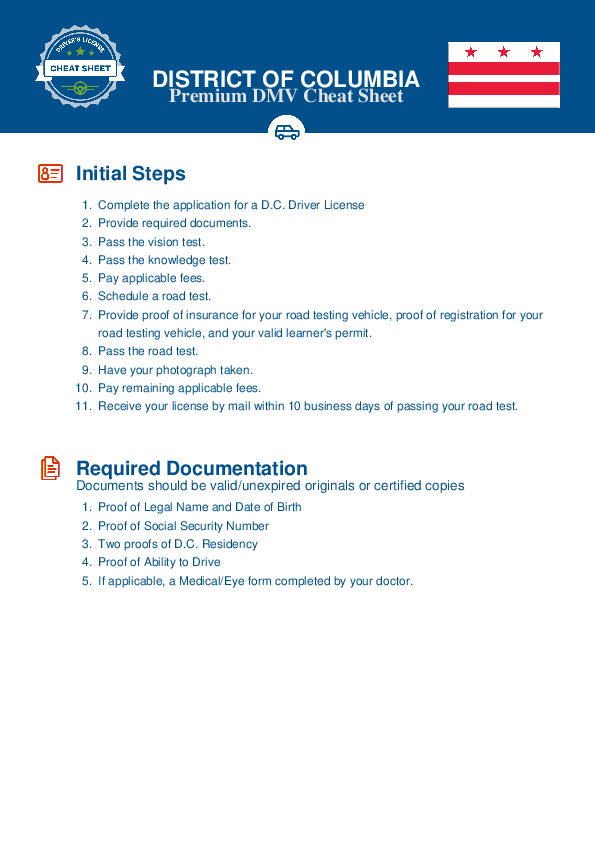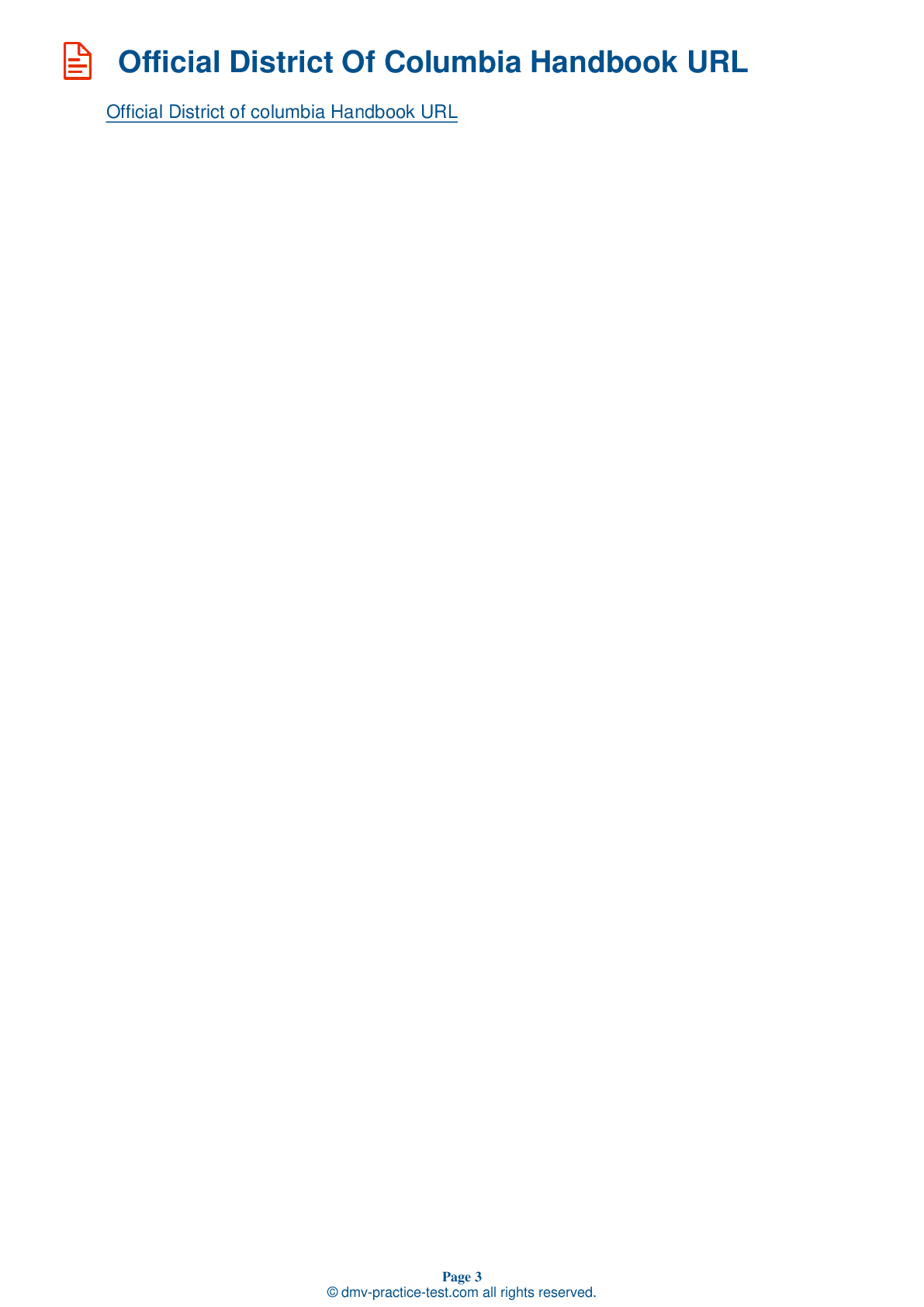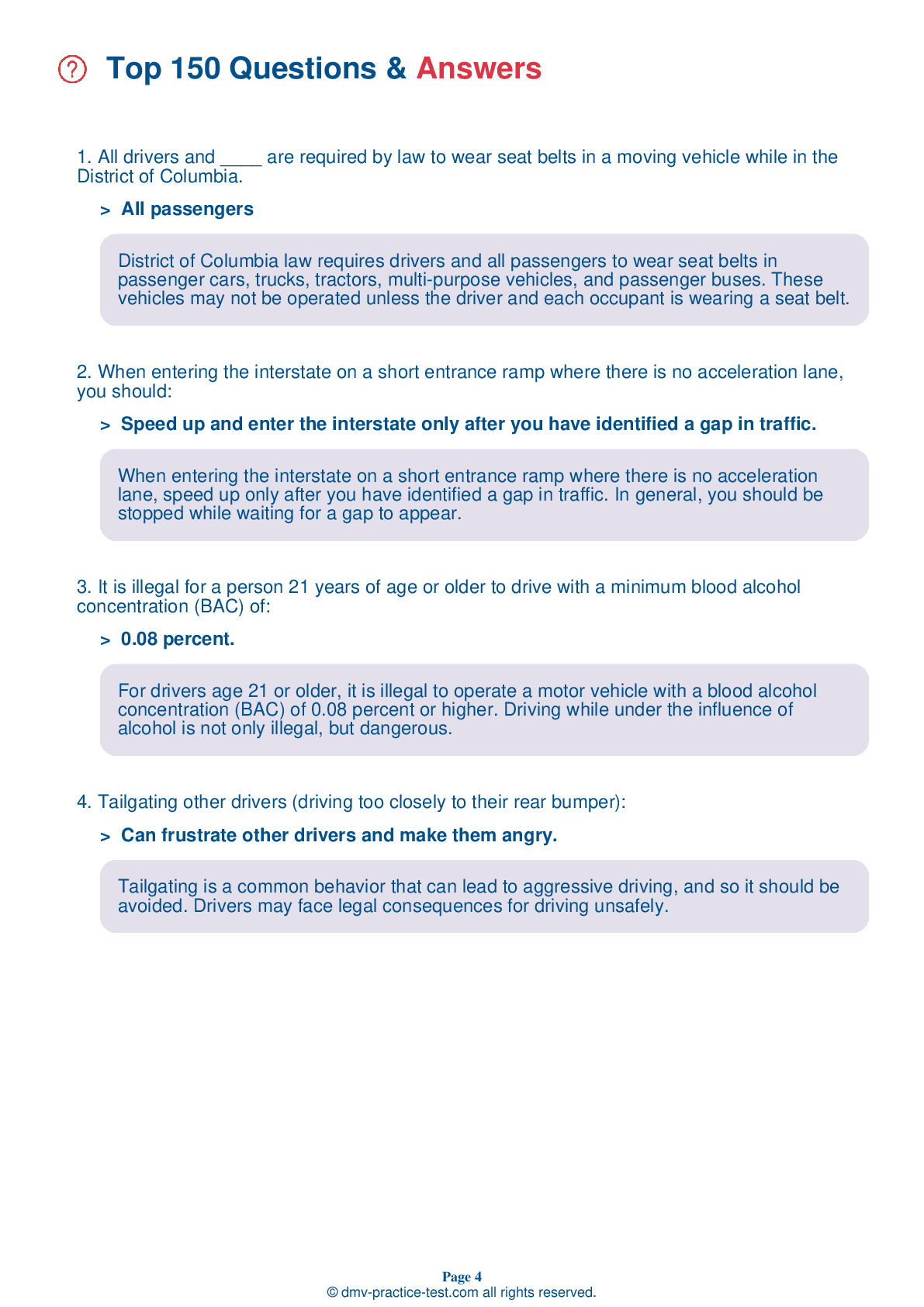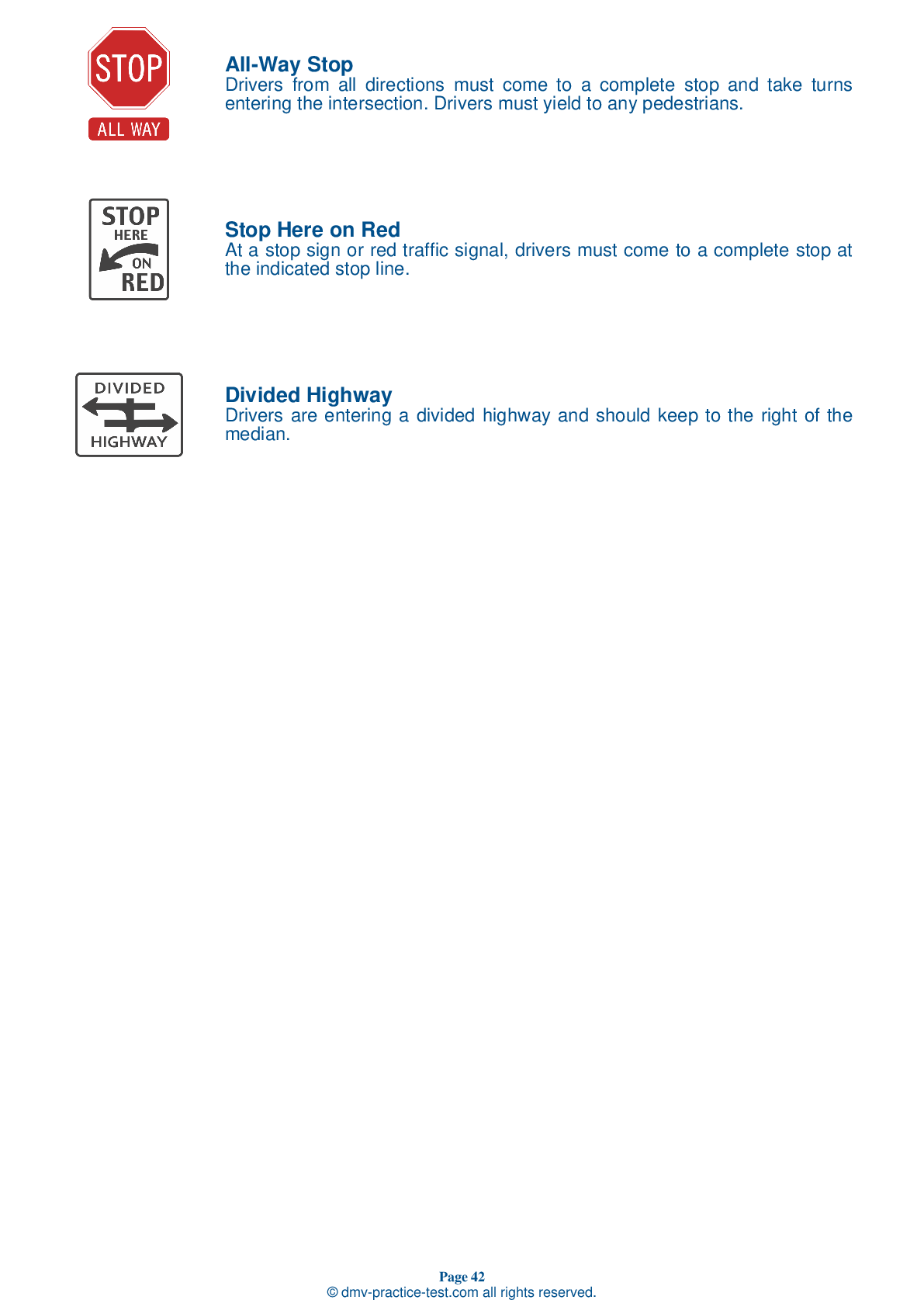FREE District Of Columbia DMV Practice Test #11 Page 3 of 3
This set of District Of Columbia DMV practise tests was been updated for January 2025. It includes questions based on the District Of Columbia Driver Handbook's most significant traffic signs and laws for 2025. Use actual questions that are very similar (often identical!) to the DMV driving permit test and driver's licence exam to study for the DMV driving permit test and driver's licence exam.
On the practise exam, each question gets a tip and explanation to help you remember the concepts. The written component of the official DMV test will include questions about traffic rules, traffic signs, and driving statutes, as well as information from the Driver Handbook.
To achieve the required passing grade, you must correctly answer 20 of the 25 questions. Take our DMV practise exam to help you prepare for your District Of Columbia instruction permit or driver's licence.
The DMV exam is available in several languages.
Using any form of testing help will result in an automatic fail, and the DMV may take further action against your driver's licence, so avoid it.
17 . This sign means:
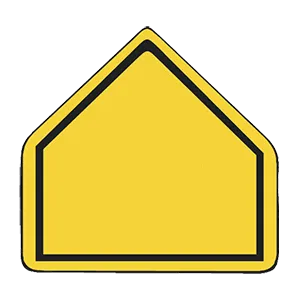
A five-sided yellow or yellow-green sign alerts drivers to either a school zone or school crossing.
18 . Before turning left, it is important to:
When turning left at a traffic signal, you must yield the right-of-way to pedestrians and oncoming traffic.
19 . If a crossing guard is directing traffic in a school zone, you must:
Be prepared to reduce your speed and use caution when directed to do so by a sign, crossing guard, or law enforcement officer. Always drive with extra caution in a school zone.
20 . This road sign means:
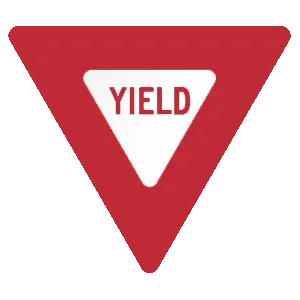
This type of triangular sign means drivers must yield. You must slow down as you come to an intersection marked with this sign and be prepared to stop. Let any other vehicles, bicyclists, or pedestrians pass safely before you proceed.
21 . What does this road sign mean?

An octagonal sign always means stop. When approaching a stop sign, you must come to a complete stop at the marked stop line and proceed only when it is safe to do so. If there is no stop line, stop before the crosswalk. If there is no crosswalk, stop before the intersection at a point from which you can see any oncoming traffic.
22 . You should not use your horn:
When driving near a blind pedestrian, using your horn may be dangerous. Yield to the pedestrian and proceed when it is safe to do so.
23 . Downward-facing triangular signs:
Downward-facing triangular signs usually indicate that drivers should yield. Once the road is clear of traffic or pedestrians and it is safe to do so, drivers may proceed.
24 . Children on bicycles should be given extra space by motor vehicle operators because:
Children are often the least predictable pedestrians and the most difficult pedestrians to see. Take extra care to look out for children, especially near schools, bus stops, playgrounds, parks, and ice cream trucks. Be aware of children riding bikes on the sidewalk, as they may come onto the road unexpectedly.
25 . You are required by law to notify the Department of Motor Vehicles of a change of address within ____ of the change.
Drivers who change their address are required to update their information with the Department of Motor Vehicles within 60 days of the change.
Need Car Insurance? No problem!
Compare the best rates in District Of Columbia and find a personalized policy that meets your needs.
1. Are You Currently insured ?
2. Married ?
3. Do you own your Home?
4. Do you have more than 1 car ?
5. Have you or a Family Member Honorably Served in U.S. Military ?
6. Your Name
7. Age
8. Zip code
IMPORTANT REMINDER:Auto Insurance is Mandatory to drive in District Of Columbia. Get covered before you hit the road to avoid any fines.
Ranked by best match
